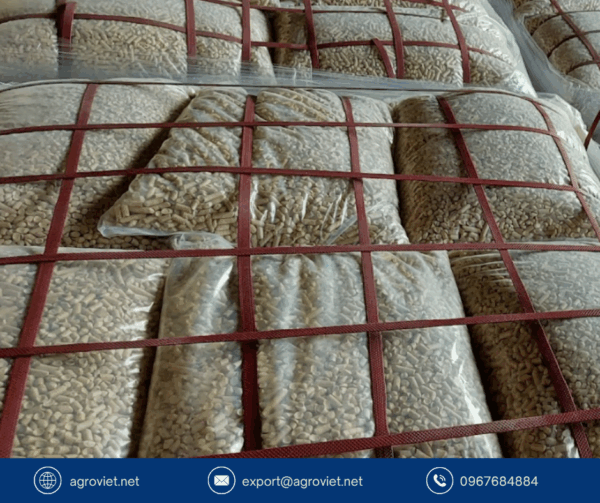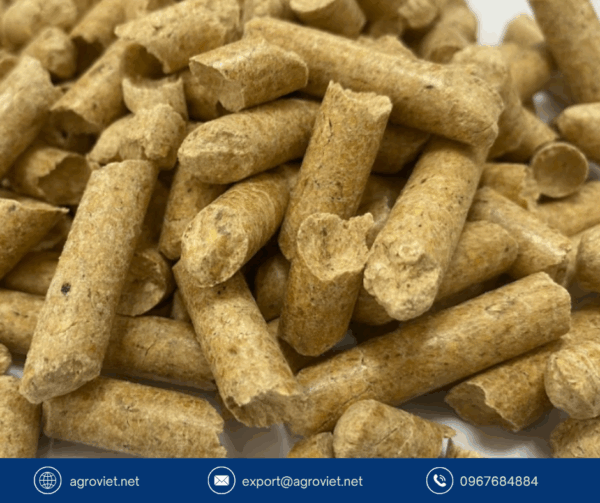Ammonia Buildup in Goat Barns: The Silent Respiratory Threat
Introduction to Ammonia Buildup in Goat Barns
Ammonia buildup in goat barns, resulting from urine decomposition in wet or soiled bedding, poses a silent but serious threat to respiratory health in goats and farm workers. High ammonia levels irritate the respiratory tract, leading to infections, reduced productivity, and compromised welfare. Poor bedding hygiene exacerbates this issue, creating damp, pathogen-rich environments. Clean wood pellets, with their exceptional absorbency and low-dust properties, are a critical solution for controlling ammonia and maintaining a healthy barn environment. Drawing on insights from a 2000 study published in PubMed, this post explores the dangers of ammonia buildup and the role of wood pellets in prevention.
Understanding Ammonia Buildup and Its Horrible Effects In Goat Barns
Ammonia (NH3), a volatile gas produced by bacterial breakdown of urea in urine, accumulates in poorly ventilated or unhygienic barns. In goat housing, ammonia levels above 10 ppm cause respiratory irritation, increasing susceptibility to diseases like pneumonia and pasteurellosis. The PubMed study notes that ammonia concentrations in livestock barns often exceed 20 ppm, with levels as high as 50 ppm in poorly managed systems, leading to chronic respiratory issues. In goats, symptoms include coughing, nasal discharge, and reduced feed intake, while farm workers may experience eye irritation and respiratory discomfort. Chronic exposure also weakens immune responses, amplifying disease risk.
How Wet and Soiled Bedding Contributes

Wet and soiled bedding, such as straw or low-quality sawdust, is a primary source of ammonia buildup. Moisture from urine, water spills, or poor ventilation creates anaerobic conditions that enhance urea decomposition, releasing ammonia. Soiled bedding, laden with manure, further increases bacterial activity, elevating ammonia levels. The PubMed study highlights that bedding moisture above 30% significantly boosts ammonia production, with damp litter releasing up to 10 times more ammonia than dry bedding. Infrequent cleaning or reused bedding, common in some operations, exacerbates this issue, trapping moisture and pathogens.
Watch this: https://www.youtube.com/watch?v=2L2Bn_Sr82w
Respiratory Health Impacts
Ammonia buildup has severe consequences for goat health:
-
Respiratory Irritation: Ammonia irritates mucous membranes, causing coughing, sneezing, and nasal discharge, which predispose goats to bacterial infections like Pasteurella or Mannheimia.
-
Immune Suppression: Chronic exposure weakens immune responses, increasing susceptibility to respiratory diseases and reducing growth rates by 5-10%.
-
Welfare Concerns: Discomfort from irritated airways reduces feed intake and milk production, with dairy goats showing up to 15% yield losses in high-ammonia environments. The PubMed study emphasizes that ammonia levels above 25 ppm in barns correlate with a 20% higher incidence of respiratory infections, particularly in young or immunocompromised goats.
Economic and Zoonotic Impacts
Ammonia buildup affects farm economics and public health:
-
Economic Losses: Respiratory diseases reduce milk yield, weight gain, and reproductive efficiency, costing $50-$200 per goat in treatment and productivity losses. Large herds face annual losses of $5,000-$20,000.
-
Zoonotic Risks: High ammonia levels irritate farm workers’ respiratory systems, increasing risks of chronic bronchitis or asthma. The PubMed study notes that ammonia exposure in livestock workers is linked to occupational health issues, raising regulatory concerns. Poor barn hygiene also increases pathogen loads, amplifying risks of zoonotic diseases like Q fever, which can spread from goats to humans.
Why Poor Bedding Worsens Ammonia Buildup In Goat Barns
Poor bedding choices exacerbate ammonia buildup by:
-
Retaining Moisture: Straw or reused sawdust holds water, creating conditions for bacterial urea breakdown.
-
Promoting Bacterial Growth: Soiled bedding harbors bacteria that accelerate ammonia production in goat barns.
-
Lacking Absorbency: Low-quality materials fail to manage urine, leading to persistent dampness and gas release.
-
Poor Hygiene: Infrequent replacement allows ammonia to accumulate, with studies showing a 30% increase in ammonia levels in barns with inadequate bedding management. The PubMed study underscores that wet bedding is a primary driver of high ammonia concentrations, directly impacting respiratory health.
The Importance of Wood Pellets
Clean wood pellets, made from compressed, heat-treated sawdust, are an effective solution for controlling ammonia buildup in goat barns. They absorb up to five times their weight in moisture, keeping litter dry and reducing bacterial activity that produces ammonia. The heat-treatment process eliminates pathogens, ensuring a hygienic environment. Unlike straw, which retains moisture, or sand, which can harbor bacteria, wood pellets create a low-dust, comfortable bedding layer that minimizes ammonia release and respiratory irritation. By maintaining litter moisture below 20%, wood pellets significantly reduce ammonia levels and improve barn air quality.
Scientific Evidence Supporting Wood Pellets In Goat Barns
The PubMed study and related research, such as the ScienceDirect study on poultry bedding, confirm that absorbent, hygienic bedding reduces ammonia emissions. Wood pellets lower litter moisture by 40% compared to straw, decreasing ammonia concentrations by up to 50%. Their low-dust nature minimizes airborne irritants, with barns using wood pellets reporting a 20-30% reduction in respiratory issues. The Veterinary Research study on calves supports similar principles, noting that dry bedding reduces pathogen and gas accumulation, applicable to goat housing. Wood pellets also enhance goat comfort, reducing stress that exacerbates respiratory susceptibility.
Key Benefits of Wood Pellets for Goat Bedding
-
Ammonia Control: Absorbs urine, reducing moisture and bacterial activity that produce ammonia.
-
Hygienic Properties: Heat-treated to eliminate pathogens, ensuring a clean environment in goat barns.
-
Low Dust: Minimizes airborne irritants, protecting respiratory health in goats and workers.
-
Comfort: Provides a soft, dry surface, reducing stress and supporting immunity.
-
Cost-Effective: Durable, requiring less frequent replacement than straw or other materials.
Consequences of Neglecting Proper Bedding
Using wet, soiled, or low-quality bedding increases ammonia buildup, leading to severe outcomes. Respiratory infections affect 10-20% of goats in high-ammonia barns, with treatment costs of $50-$200 per animal and milk or growth losses of $20-$100. Large operations face $5,000-$20,000 in annual losses from reduced productivity and veterinary expenses. Chronic ammonia exposure compromises welfare, causing discomfort and stress, and raises zoonotic risks for farm workers. Poor bedding also increases labor for cleaning and treatment, further impacting profitability.
Practical Tips for Using Wood Pellets In Goat Barns
To maximize the benefits of wood pellets, goat farmers should:
-
Source high-quality, untreated wood pellets from reputable suppliers to ensure purity.
-
Spread a 1-2 inch layer and add water to expand into a 4-6 inch bedding base for optimal absorbency.
-
Clean pens daily, removing soiled pellets and adding fresh ones to maintain hygiene.
-
Store pellets in dry conditions to prevent mold contamination in goat barns.
-
Ensure 6-8 air changes per hour through ventilation to reduce humidity and ammonia levels.
Complementary Strategies for Ammonia Control In Goat Barns
In addition to wood pellets, these practices help reduce ammonia buildup:
-
Ventilation: Maintain adequate airflow to disperse ammonia and reduce humidity, targeting 50-60% relative humidity.
-
Nutrition: Provide balanced diets to optimize rumen function, reducing excessive urea excretion.
-
Manure Management: Remove manure regularly to prevent bacterial decomposition in goat barns.
-
Water Systems: Use leak-proof drinkers to minimize bedding moisture.
-
Health Monitoring: Conduct regular checks for respiratory signs, with prompt antibiotic treatment for infections like pasteurellosis, as per veterinary guidance.
Economic and Welfare Impacts
Wood pellets improve goat welfare by reducing ammonia-related respiratory issues, ensuring comfort, and minimizing stress-related immune suppression. Healthy goats maintain milk yield and growth, saving farmers $50-$200 per animal in treatment and production losses. The PubMed study highlights that effective bedding management supports herd productivity and reduces veterinary costs. Wood pellets’ durability lowers bedding expenses, while their biodegradable nature aligns with sustainable farming, meeting consumer demand for ethical livestock care and boosting profitability.
Addressing Challenges with Wood Pellets
Challenges include the initial setup time for wetting pellets to expand and sourcing high-quality, dust-free products. Farmers should select premium pellets and store them in dry conditions to prevent mold. Daily cleaning prevents compaction, maintaining absorbency. With proper management, wood pellets offer significant advantages in controlling ammonia and supporting goat health.
Conclusion
Ammonia buildup from wet, soiled bedding is a silent respiratory threat in goat barns, increasing infection risk, compromising welfare, and causing economic losses in these barns. Clean wood pellets, with their high absorbency, low-dust, and hygienic properties, are a proven solution to reduce ammonia levels and maintain a healthy environment. Supported by PubMed research, wood pellets lower respiratory disease incidence, enhance goat welfare, and reduce costs. By prioritizing wood pellets and adopting complementary management practices, goat farmers can protect their herds, ensure productivity, and achieve sustainable, profitable operations.
Read more: https://vietnambestwood.com/general/agroviet-wood-shavings-for-horses/
